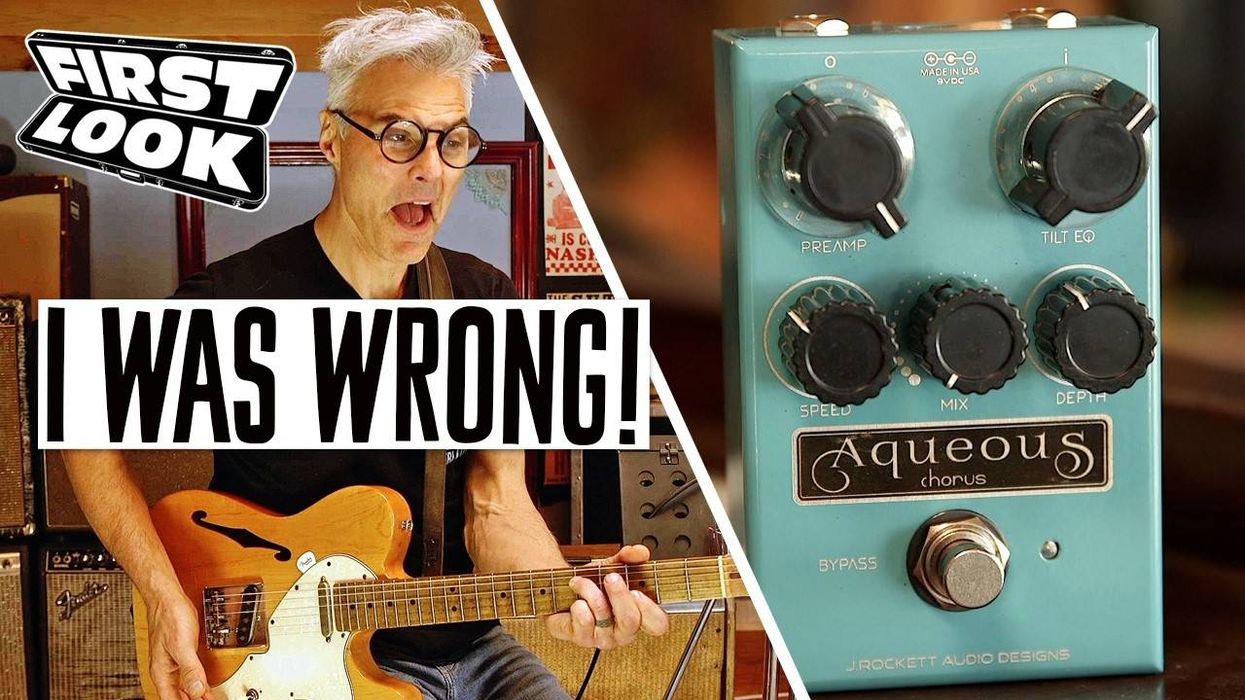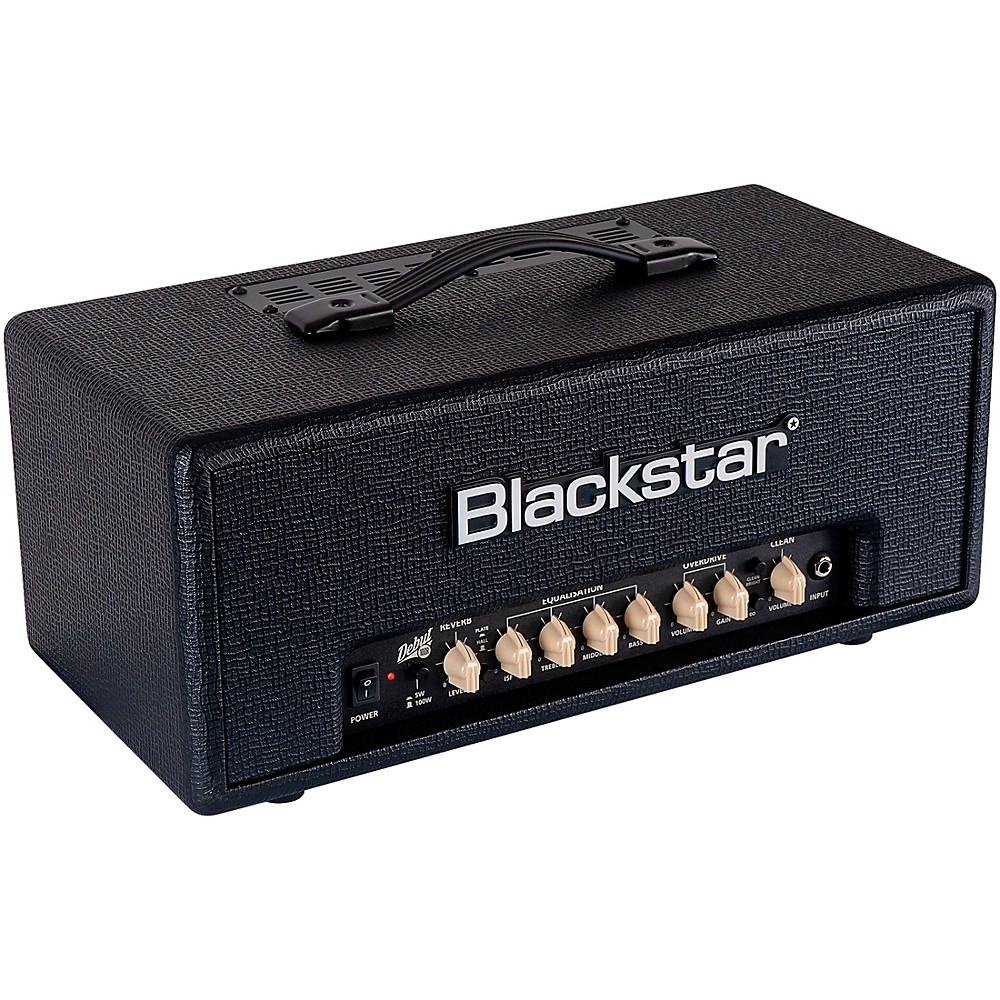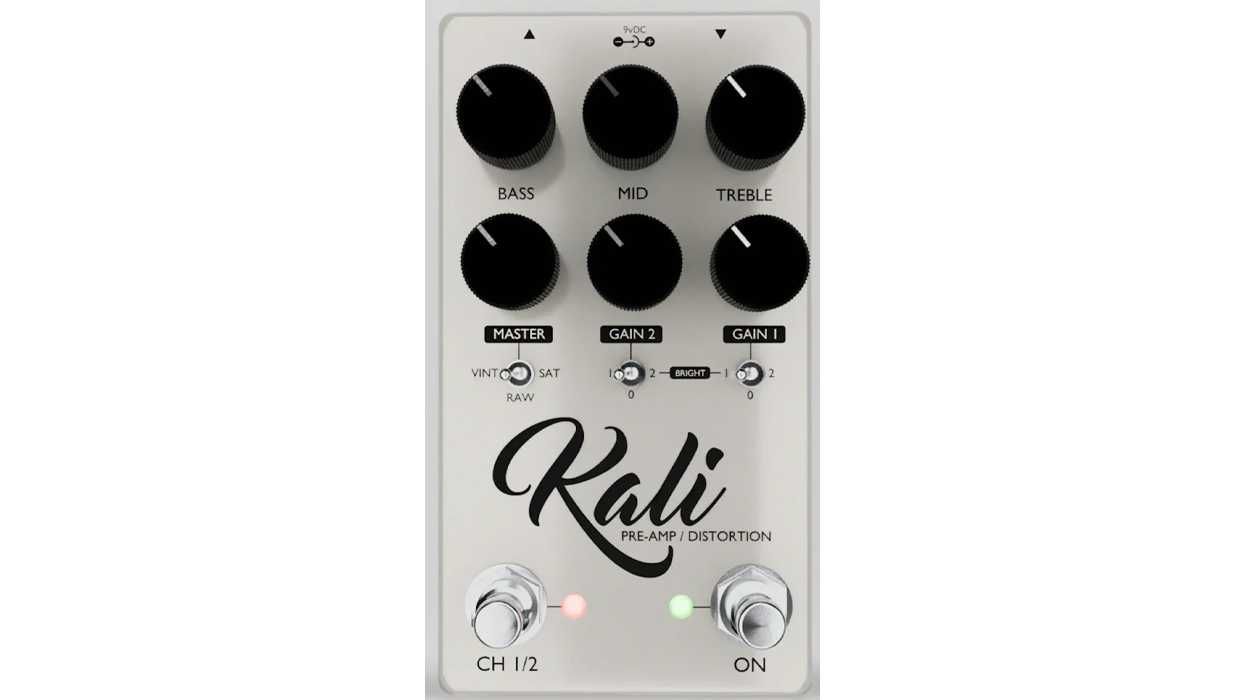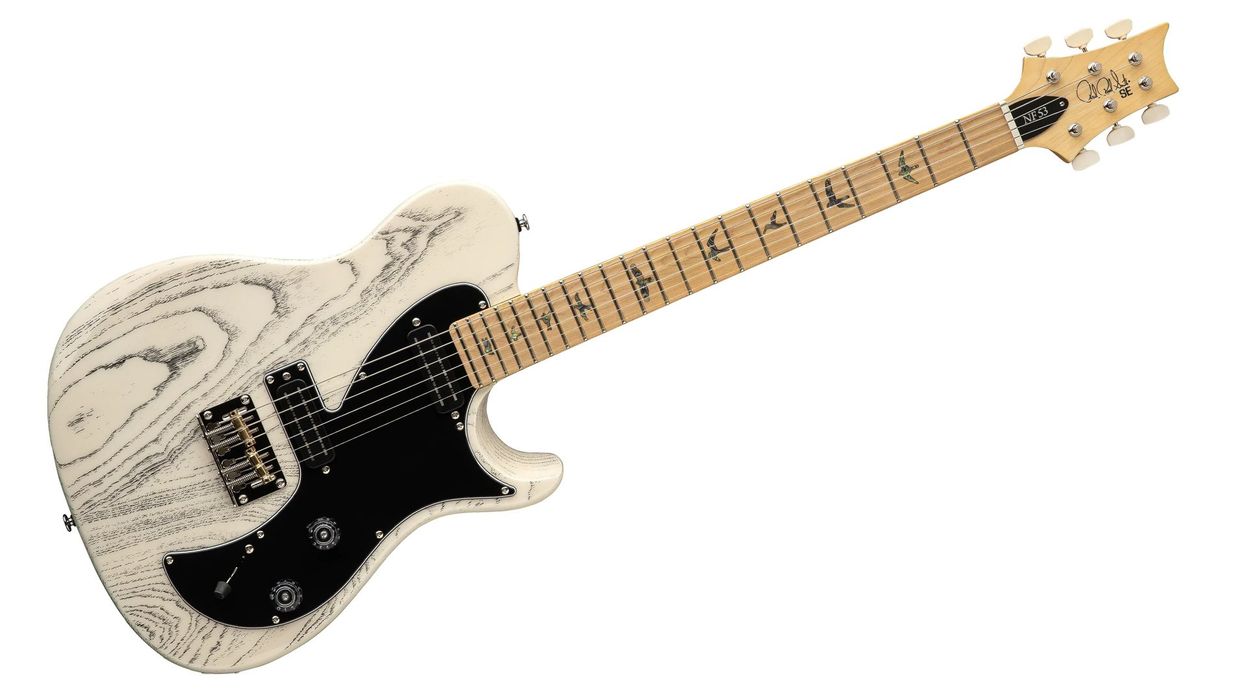I really needed the shot of adrenaline I got from Death By Audio’s Germanium Filter. I appreciated the reminder that stompboxes should prod you along reckless creative vectors. It felt great to play something so simple that sounds so cool in so many ways. It also felt good to tap into a mainline source of sass and attitude.
Obviously, Death By Audio is famous for devices that provoke such reactions. But their new Germanium Filter doesn’t thrill just because it’s weird. It excels at overdrive, distortion, and fuzz. And the germanium circuitry makes it capable of great dynamic nuance. But it’s also positively explosive, buzzes like a two-ton mutant hornet, and gets fantastically trashy. For a pedal with just two knobs and an internal trimpot, its capacity for tone variation and richness across so many different sounds is impressive.
Dynamite Kegger
Even by DBA standards, the Germanium Filter looks crazy cool. The vertically aligned flying saucer knobs for gain and filter are easy to read at long range. A third trimpot for master volume is situated inside the enclosure. That’s a bummer, because the volume can profoundly change the functionality, flexibility, and sound of the pedal by adding copious extra power, thump, and contrast.
One way to extract maximum potential from the Germanium Filter—particularly at higher volume levels—is by employing a dynamic touch. The Germanium Filter is sensitive to guitar volume attenuation in the same way a vintage germanium fuzz like a Fuzz Face is. It’s also responsive to picking dynamics, and even at aggressive gain levels you can clean up with a light touch. This dynamism makes the Germanium Filter an expressive vehicle for heavy electric fingerstyle improvisation. And though it can be a tad noisy in delicate-to-loud applications, I’d argue the tactile thrills are worth it.
Filter to Focus
The filtering aspect of the Germanium Filter is not subtle. The pedal’s output is compressed and highly focused. Yet it can readily shift emphasis from brilliant, scalding top end to heavy-swinging low-midrange without sacrificing potency or its capacity for chord detail. As a result, the number of possible sounds and applications stacks up fast.
There’s plenty of the piercing, gnarly, and funky sounds that Keith Richards would have died for in his ’66–’68 period.
Tone touchstones are elusive when describing the Germanium Filter’s voice. Fuzz sounds at maximum gain are super ripping, especially at treblier settings. DBA mentions recording console drive as an inspiration for the circuit, and it’s easy to hear and feel traces of a vintage console’s input overdrive tendencies. Some early germanium fuzzes could also be a kissing cousins. But the Germanium Filter is more compressed and focused than most mid-’60s fuzzes, and often more savage for it.
Among the cleaner, bass-heavy overdrive sounds there is a hint of the high-mid clang you sometimes hear from a big Marshall stack. The heavy side of the filter can also contribute to the illusion of a 4x12’s sense of mass if you’re trying to make a little amp sound big. But even higher-gain settings sound organic, cohesive, present, and punchy in the top end in a way that makes your amp feel like a living, breathing thing. Indeed, one of the most beautiful things about the Germanium Filter is that it sounds so bold without feeling like an awkwardly grafted appendage to your rig.
Needless to say, it’s pretty easy to craft tone oddities with the Germanium Filter. There’s plenty of the piercing, gnarly, and funky sounds that Keith Richards would have died for in his ’66–’68 period. Some tones could have been a parallel-universe path Jimmy Page might have taken to Led Zeppelin. Mick Ronson probably would not have objected to a go at it either. But the Germanium Filter is by no means just a retro-rock trip. The tight, concise nature of many of these drive tones makes them a perfect pairing for expansive reverbs, delay, and modulation that turn more full-frequency drives to mush. And many post-rock, shoegaze, and improvisational players will dig the way the Germanium Filter sparkles and remains articulate among thick, stacked effects.
The Verdict
Sometimes the right pedal hits you at the right time. And the Germanium Filter sparked a fire that I hadn’t felt in a while. I’m keenly aware that a lot of these tones won’t be for everyone. Players seeking wide-spectrum or transparent drive tones might find the focus of the filter too narrow and many of the tones just plain odd. But I found the Germanium Filter’s stylistic range engaging and vast. Even its most pedestrian overdrive sounds bristle with deviant attitude. Other sounds suggest weird old catalog amps and audio engineers slamming recording console inputs and tweaking EQ to creative ends. And the fuzz tones are among the most exciting I’ve heard in a long time.
It’s probably smart to give the Germanium Filter a go before you buy. At 225 clams, it’s an investment. And some players in search of more even-tempered and predictable tones may struggle to make sense of it. Accordingly, the tones and value scores here should be considered fluid. Players with more conventional goals may want to round down and approach with caution. Weirdos, however, should probably round up and pounce. For players craving a shot of pure, super-heated sound energy, new directions for solos and riffs, or a way to elevate a performance or mundane mix, the Germanium Filter is a treasure in waiting.


















